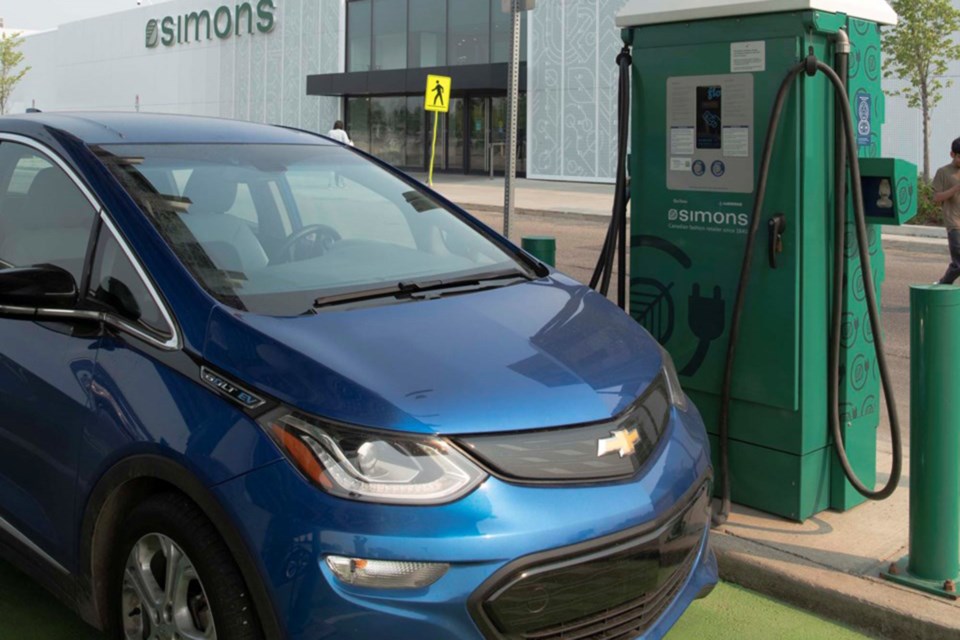Proposed regulations south of the Canadian border could have positive impacts on the burgeoning lithium industry in Alberta.
On April 12, the United States Environmental Protection Agency (EPA) announced they were proposing more rigorous standards to reduce air pollutant emissions from light-duty and medium vehicles. If passed, the move would have an economic and regulatory impact in Canada, according to the Pembina Institute.
“This could be a golden egg for the economy — the rapid increase in demand for critical minerals both in the U.S. and elsewhere is a potential windfall for the Canadian mining industry,” said Adam Thorn, Transportation Director at the Pembina Institute in a statement.
The American regulations would phase in over model years 2027 through 2032, and according to the Pembina Institute, would see that as much as 67 per cent of new passenger vehicles sold in the U.S. would be electric vehicles by 2032.
“This will pose a significant challenge to auto makers; electric passenger vehicles currently make up 5.8 per cent of the new cars and trucks sold in the U.S. every year,” a statement from the Pembina Institute said.
Thorn said American automakers will need to “ramp up their production of electric vehicles.”
“That will certainly have an impact on the Canadian economy given how intertwined our automotive markets are. More than half of the vehicles produced here are sold in the U.S.,” he said.
Robin Boschman director of external affairs for E3 Lithium said overall it’s exciting and there has been much support to develop the electrical vehicle supply chain.
“Which comes down to the batteries required for EVs and the critical components required for those batteries, which includes lithium and other critical minerals as well. There's just a ton of opportunity,” she said.
According to Natural Resources Canada, lithium is a highly reactive metal that is used to make energy-dense rechargeable batteries for electronics which include the electric vehicles that are set to replace gas cars as countries transition to net-zero emissions.
The demand for resources, such as lithium has increased substantially in recent years, encouraging development of critical mineral resources in Canada and beyond.
On April 11, E3 Lithium announced they had been approved by the Alberta Energy Regulator for a pilot project that will see the company test out technology they have developed to extract the lithium ion from brine.
The project, dubbed the Clearwater Project Area, is located east of Olds. E3 lithium has 16 million tonnes measured indicated lithium carbonate equivalent in their resource which is called the Leduc aquifer, said Boschman.
“According to Natural Resources Canada, this is Canada's largest measured and indicated lithium resource. So right here at home in Alberta, we have Canada's largest measured and indicated lithium resource,” she said.
The company will use conventional oil and gas equipment to drill the “about 2.5 km underneath the ground” to extract the brine.
Once the brine is at the surface lithium ion will be extracted from the brine using direct lithium extraction technology.
“So, that technology E3 has been developing its own proprietary technology since its inception… We have been developing and testing our technology for years in a lab environment we have great results and now we will be testing in the field in real world operating conditions, which is critical to moving up to commercialization,” said Boschman.
The pilot project is expected to run for three months and Boschman said the company hopes to prove their technology works in the field.
“We're aiming to produce first commercial lithium in 2026. And being able to prove that our technology works in the field is a critical milestone to be able to do so,” she said.
Boschman said the supply demand crunch for lithium that is being driven by the push to accelerate electric vehicle usage is expected to persist into the 2030s.
According to the International Energy Agency (IEA) in May 2022, lithium prices increased seven times prices in early 2021 due to “unprecedented battery demand.”
In a report, the IEA said lithium supplies would need to rise by a third to meet demand in Announced Pledges Scenarios (APS) to meet climate targets.
“Demand for lithium – the commodity with the largest projected demand-supply gap – is projected to increase sixfold to 500 kilotonnes by 2030 in the APS, requiring the equivalent of 50 new average-sized mines,” the report by IEA read.
When it comes to world reserves of lithium Canada ranks sixth, according to Natural Resources Canada, with three per cent of world total reserves.
Boschman said E3 sees themselves and Alberta as playing a huge role in the transition to EVs “by providing one of the critical battery minerals which is lithium in a sustainable way.”
“We were built on a very sophisticated energy industry with a very sophisticated workforce that's able to transition into the production of this critical mineral. So we have an incredible opportunity in Alberta and we would like to see ourselves paving the way,” she said.




